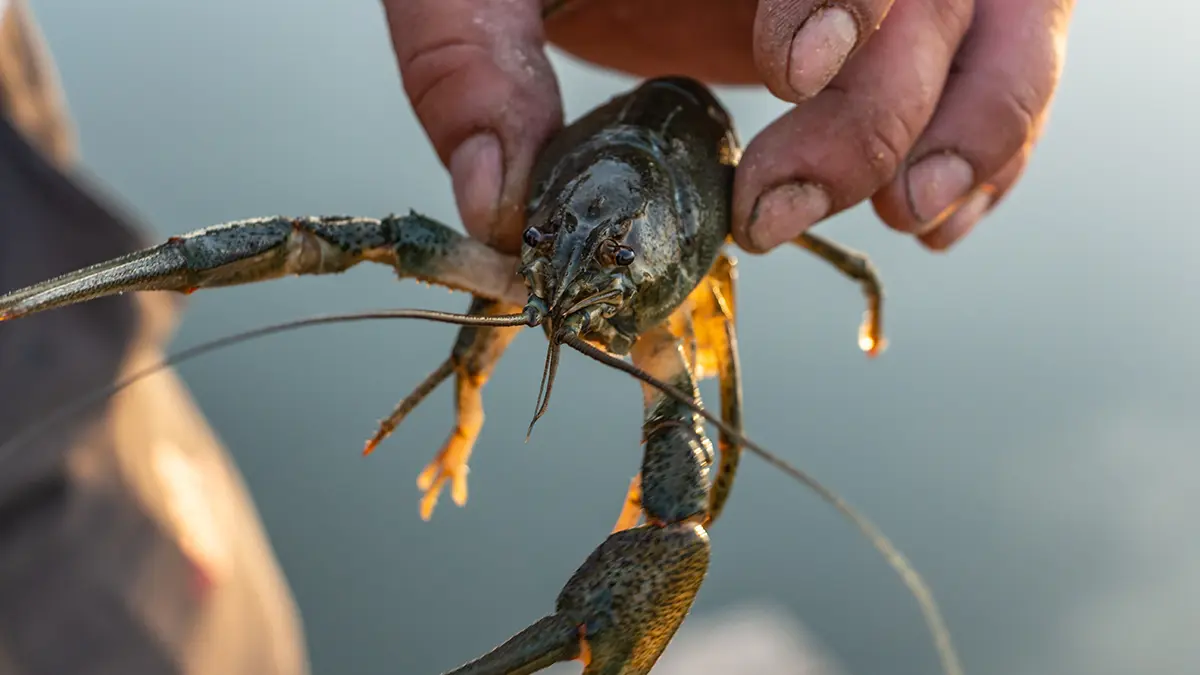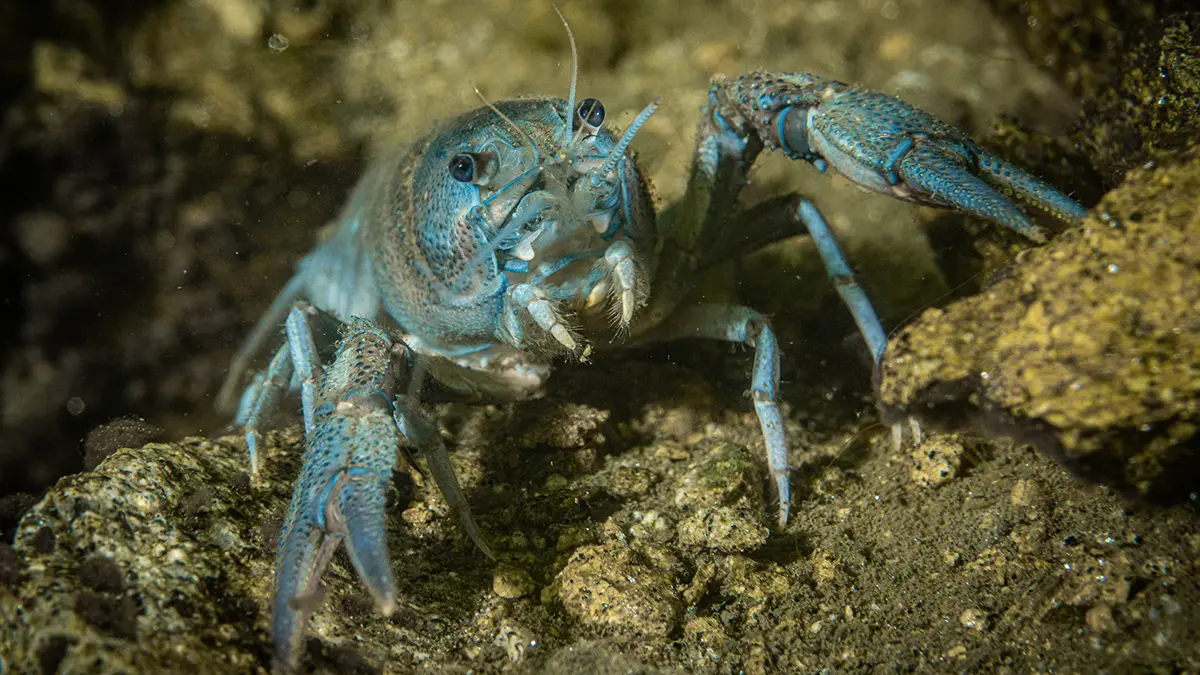Many of us are familiar with the names “crawdad,” “mudbug,” or “swamp lobster,” but crayfish is the more widely accepted term among scientists for this group of crustaceans that are closely related to lobsters and shrimp. Crayfish are quite diverse with over 600 documented species worldwide, most occurring in the Southeastern United States and Southern Australia. If you ever crawled through creeks or tromped through a swamp, there is a high likelihood you may have come across one of these interesting lobster-like creatures or one of their mud-made, chimney-like burrows. Crayfish are a popular food in the United States, with 100-150 million pounds of crayfish produced for human consumption. However, these animals are not just a delicacy for humans, serving as a valuable food source for a wide variety of gamefish, including largemouth bass. We go over the natural history of these interesting creatures in crayfish | a comprehensive guide.
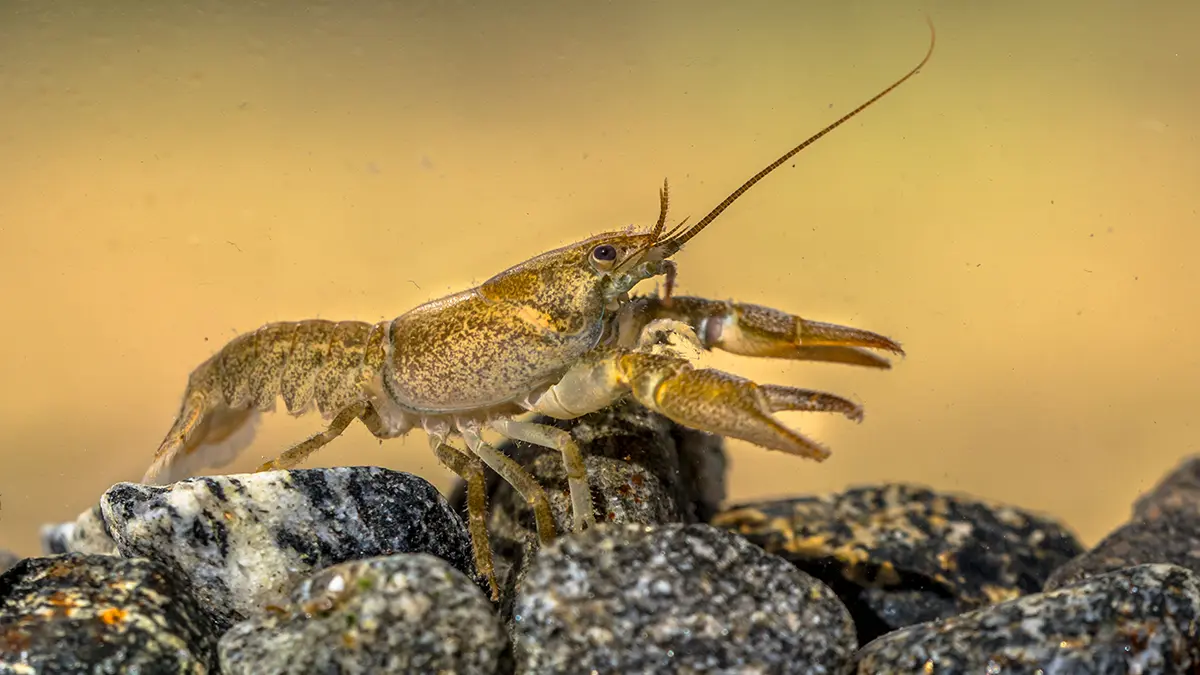
APPEARANCE
Crayfish look like mini-lobsters, and range in size from a couple inches to over 2 feet. Crayfish bodies are divided into two parts; the cephalothorax, which is comprised of the head and thorax, and abdomen. The head is located on the cephalothorax and has a pointy rostrum (a beaklike projection) with a pair of antennae used for sensing their surroundings, a pair of smaller sensory antennules, a mouth and a pair of moveable, protruding eyes. Behind the head, most of the cephalothorax is comprised of a hard shell called a carapace which is commonly used by scientists to help differentiate species.
Crayfish have 10 legs that attach to the sides of the cephalothorax: the first pair (called chelipeds) have large pinchers that are used for movement, obtaining prey and defense against predators. The next two pairs have much smaller hinged claws and the remaining two pairs do not have claws. The crayfish abdomen has seven segments. The first five segments have small appendages that appear like mini legs called swimmerets, which are used for movement and mating. A crayfish’s tail is made up of fan-like plates called uropods divided by a central structure called a telson. Crayfish can also have a variety of colorations ranging from red, orange, yellow, gray, brown, as well as green and blue.
Watch a video on understanding crawfish color transitions here.

CRAYFISH: HABITAT
Most crayfish live in freshwater environments such as creeks, streams and riverine habitats, though several species can thrive in swamps, lakes, reservoirs and caves. While most crayfish live in freshwater environments, a handful of species can live in brackish and saltwater. Crayfish are excellent at hiding and they will typically do so under rocks and other substrate, within vegetation, or by burrowing.
Crayfish burrows can appear like small volcanoes or standing chimneys from the displacement of substrate from their digging. Often, burrows are dug to where the water table can be found because they need it to survive. Their burrows can range from 3-inches to over 3-feet deep and may be dug at an angle or directly downward. Crayfish have varying behaviors and types of burrowing. Some species may be permanent residents of their burrows and some may use them temporarily. Furthermore, more permanent residents construct burrows that may be more complex, with multiple chambers while some species that use theirs temporarily may have simpler burrows.
Most crayfish prefer to live in oxygenated waterbodies with concentrations of dissolved oxygen ideally above 3 ppm. Crayfish can tolerate water temperatures from 55°F to over 80°F; they do not do well in habitats prone to freezing. During droughts, crayfish will often create their burrows for refuge from the heat and to have access to groundwater.
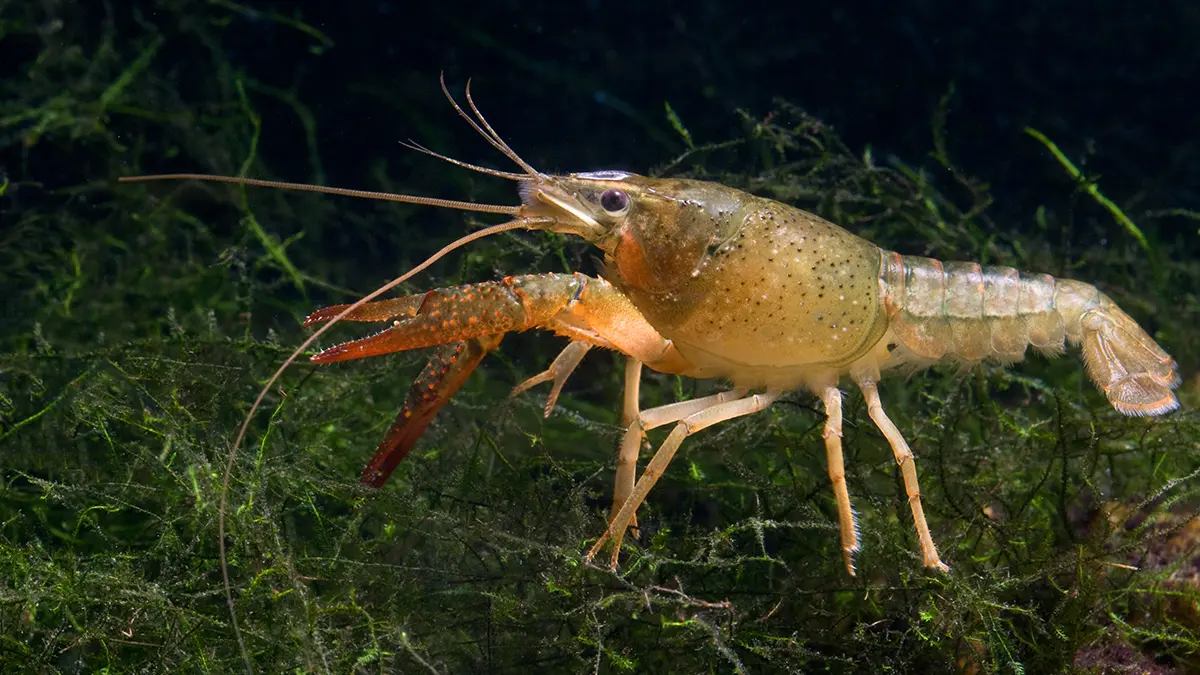
CRAYFISH: BEHAVIOR
Crayfish are opportunistic omnivores and eat a variety of things such as algae, plants, aquatic insects, smaller fish, amphibians, snails, mussels, detritus and even other crayfish. Most species of crayfish are diurnal and are active during the day, but several European species are nocturnal. Like shrimp and lobster, crayfish are known to snap their bodies to get quick bursts during swimming by contracting their abdomen and their tails. Some species of crayfish are territorial and will have a defensive stance by holding their claws outward and open when encountering certain threats.
MATING HABITS
Crayfish can be either male or female; both sexes have different body forms. Males reach smaller maximum sizes than females and they have small hooks on their walking legs that are used to mount females. Males may mate with several females and females may also have several mates during a season. Crayfish typically mate in the spring through early fall. Prior to mating, a female crayfish will produce a sticky substance on her abdomen and lay her eggs. The female attracts mates by releasing a chemical signal into the water. Mating can be aggressive between a male and female: the two will wrestle until the female submits and allows the male to mount her and fertilize her eggs.
The female will hold the fertilized eggs against her abdomen (also called “berried”) with her swimmerets for up to 20 weeks until they hatch. Once the eggs hatch, juveniles may stay with the female for a couple more weeks to complete their first few molts and then detach themselves. Since crayfish lack bones and have a rigid exoskeleton (a hard supporting or protective structure on the outside of the body), they must molt to grow, and will do so nearly 10 times during their first year of life. Juvenile crayfish may reach adulthood anywhere from 3-12 months depending on the species.
Some species of crayfish live longer than others. Typically, the larger species tend to have longer life spans. For example, the Tasmanian giant freshwater crayfish, the largest species of crayfish, can live nearly 60 years, whereas the rusty crayfish may live 2-5 years.
If you’re interested in seeing in seeing how live crawfish compare to crawfish bass baits underwater, you can watch here.
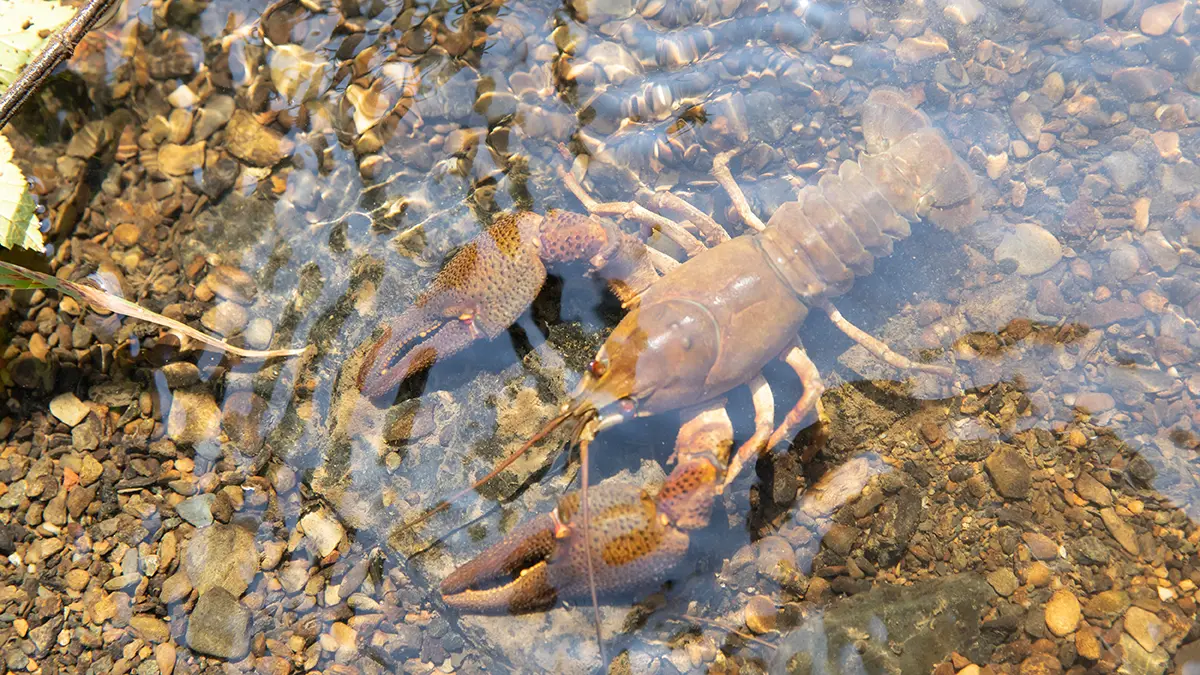
CRAYFISH CONSERVATION
Crayfish are very important to aquatic ecosystems because they help maintain balance among aquatic insect populations, serve as food for larger predators and are natural indicators of healthy streams. However, many crayfish have been moved outside of their native ranges by humans through use as fishing bait and pet trade. Additionally, they have been widely introduced into aquatic systems for food production and as a forage species for sport fishes in recreational ponds.
CRAYFISH: THREATS
Crayfish are susceptible to various threats. Water pollution from various toxins (e.g., fertilizers, herbicides, insecticides, metals, and other chemicals), the construction of dams on streams, water regime changes, destruction of riparian areas from urban development and logging, and sedimentation can result in habitat loss and decline in crayfish populations. Crayfish are excellent indicators of aquatic ecosystem health. Many of them prefer unimpaired systems, such consequences from human activities makes them highly susceptible to these threats.
Conversely, some crayfish such as the Rusty Crayfish, Northern Crayfish and Red Swamp Crayfish can occupy a variety of different environments and have become introduced and invasive in several locations in North America, outcompeting native species of crayfish, predating on other aquatic organisms and causing declines in populations. Invasive crayfish have spread through introductions from their use as bait, escaping aquariums,and swimming to new locations – especially during floods.
Image Credit: Adobe Stock
INTERESTING FACTS ABOUT CRAYFISH
- Crayfish are crustaceans.
- Many crayfish in the U.S. are on the decline and require special protections because of human activities.
- Crayfish have excellent eyesight.
- The Tasmanian Giant Crayfish can grow up to 11 pounds.
- Crayfish are very intimidated by claw size; individuals with smaller claws always retreat.
Co-authored with Steven Bardin, Fisheries Biologist, Texas Pro Lake Management.


